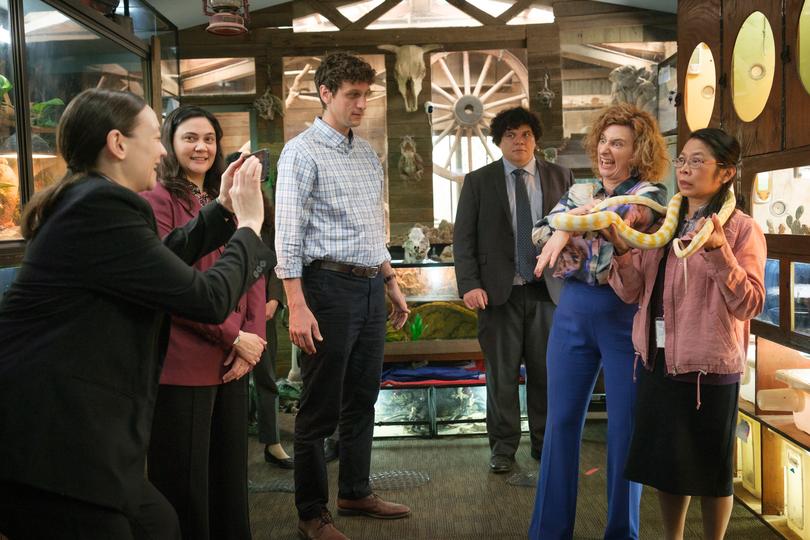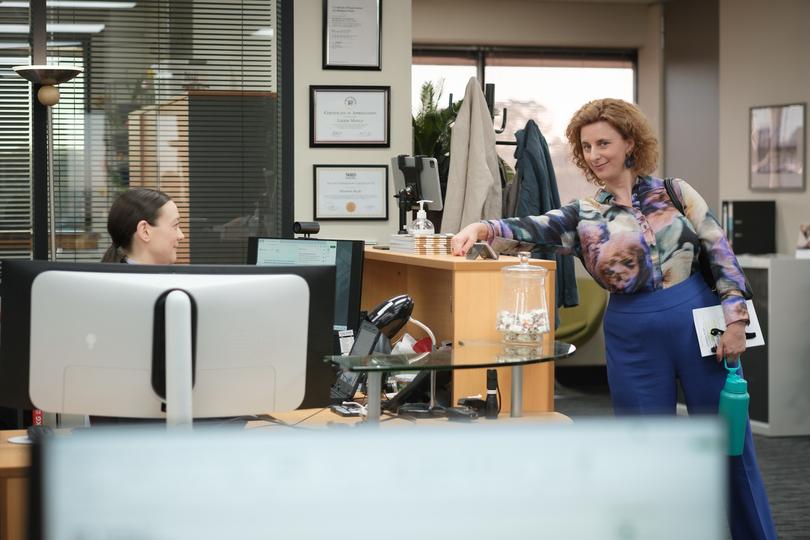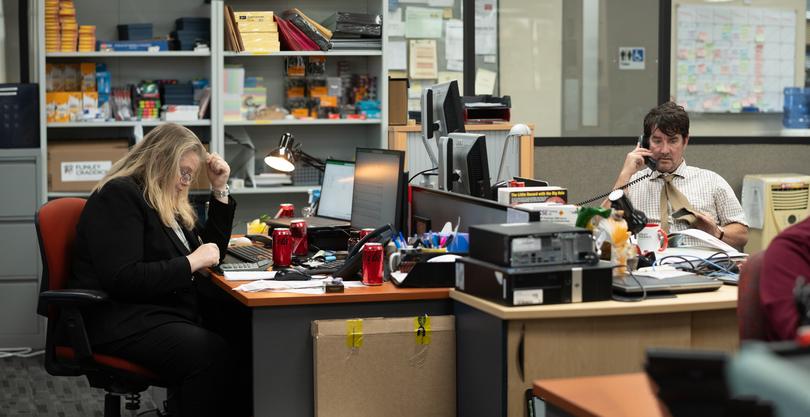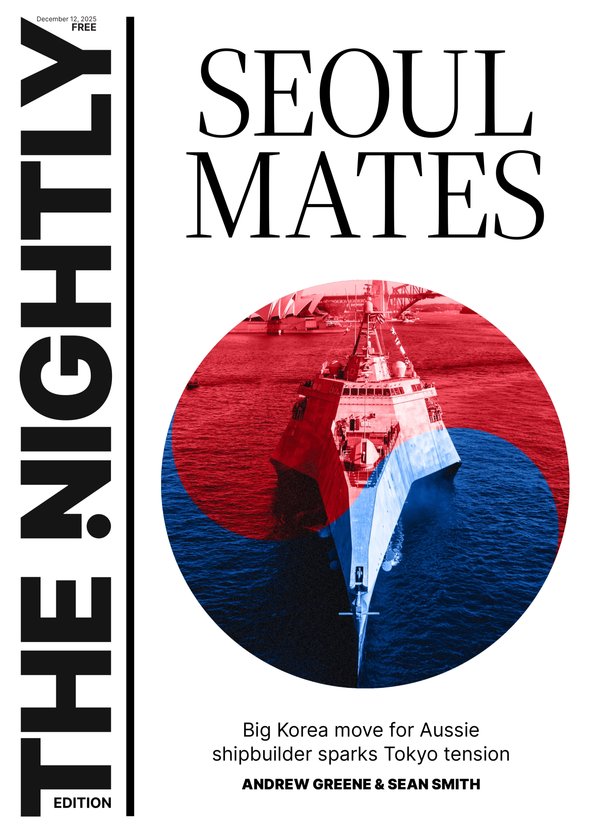The Office Australia review: Everyone calm down, it is not a catastrophe

It would be so easy if the Australian version of The Office was a disaster.
The haters would dance with joy, vindicated that they were right to have already declared it so before they had seen any more than the two-and-a-half minute trailer released online a month ago.
Pop culture loves a failure.
Sign up to The Nightly's newsletters.
Get the first look at the digital newspaper, curated daily stories and breaking headlines delivered to your inbox.
By continuing you agree to our Terms and Privacy Policy.It makes everyone feel smug and superior about their discerning tastes. It’s even sweeter when the thing that failed is a remake/reboot/revival, even more so if there has been a modern update that resulted in a gender flip or enhanced inclusivity.
We’re sorry to tell the cynics but The Office Australia is not a catastrophe. It’s not a meltdown, it’s not a wreck and it’s not even bad.
It’s also not a revelation, boundary-pushing or the funniest thing you’ll ever watch.
What it is, is fine.

The Office Australia is the latest in a long-running franchise that started with Stephen Merchant and Ricky Gervais’ original series, was supercharged by the beloved American version starring Steve Carell, and spooled into a further 11 international variants spanning places as different as Quebec, Poland and Saudi Arabia.
With that history comes a weight of expectations, both good and bad. Bad because unless you live up to the original, some will always condemn it as terrible. Good because you benefit from the shorthand created by your predecessors.
In that sense, The Office Australia is exactly what it should be – an amiable comedy that provides a few chuckles, some culturally specific Australian references, a commanding lead performance from comic Felicity Ward, and some disappointments.
First, the stuff that works. Ward is great as Hannah Howard, the cringe manager of a small fry branch of a packaging company. She’s game in playing up Hannah’s annoying traits, her sometimes cluelessness and her lack of boundaries.
The character is supposed to make you uncomfortable but here’s the surprising part – you like Hannah. Unlike her better-known counterparts, David Brent and Michael Scott, Hannah genuinely comes from a place of care, even if it isn’t necessarily the right thing for everyone.

David Brent and Michael Scott were driven by selfish needs, always led by what was right for them, although in later seasons, Michael Scott’s growth meant he was able to be a more generous and outward-focused leader, but it took several years to get there.
The longer arc of this season is Hannah wants to keep the work family together so she contrived a scenario in which everyone has to attend the office every day, even though they’d rather work from home.
It works for Hannah, but she’s right that being in it together builds connection and is, ultimately, better for all than the isolation of permanent remote work. She is thinking about them too, not just her. That makes her a more interesting character from the get-go rather than having to work up to it.
Also, it’s 2024 and does anyone still want to watch mean-spirited, mediocre male narcissists with tons of neuroses?
There are also some fun Australian stories such as the episode centred on the Melbourne Cup. The fraught politics and questionable behaviour of the annual festivities will be recognisable to most.
What didn’t work as well was that the series knew it could lean on the assumed knowledge established by the previous versions and as a result, The Office Australia lacked depth in that many of the characters and scenarios didn’t feel fleshed out or distinct.
Beyond Hannah, who is fully formed, the characters felt fleeting and intangible and we were left to fill in the gaps with what their previous versions had done, rather than what we see here.

The Australian version of Tim and Dawn/Jim and Pam are Nick (Steen Raskopoulos) and Greta (Shari Sebbens). They don’t have the same chemistry and if you think too hard about it, you realise you really don’t know enough about them to invest in their fates, romantic or otherwise. There’s not necessarily a “there” there.
The first episode is also a bit wobbly and lacks proper laughs, so it takes a beat to get going.
The decision to make available all episodes at once was a smart one. You could easily see audiences dropping off if they had to wait week-to-week.
As was the choice to re-order the sequence of the episodes so that some of the stronger chapters including the Melbourne Cup and another in which the workplace mourns the loss of one of their unmemorable colleagues were moved up to nearer the start.
For a starter season, The Office Australia mostly works. If it gets the chance to come back for more, it should take the opportunity to deepen its characters but for now, it’s good for a few chuckles, familiar vibes and the joy that is Hannah Howard.
It’s definitely not a calamity. Everyone calm down.
The Office Australia is on Prime Video from Friday, October 18

